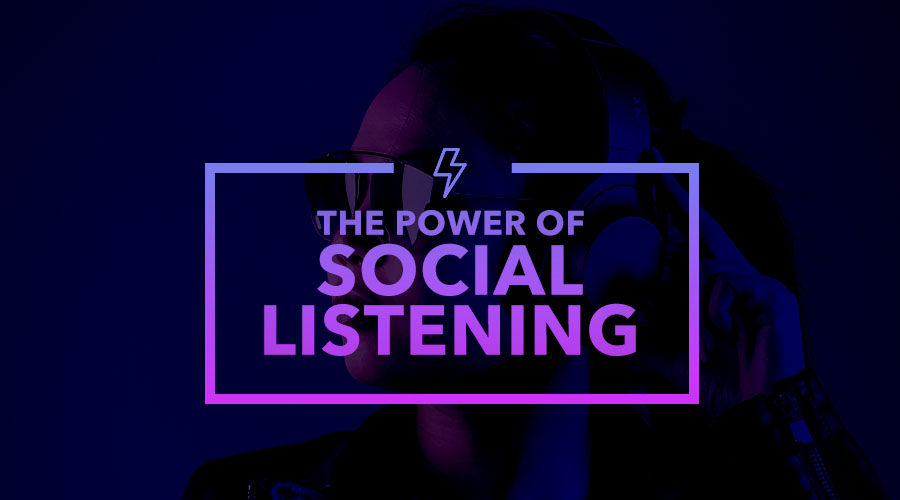The Power of Social Listening and User Generated Content
Published on 24th of July 2023User-generated content can be any type of media (written texts, photos, videos, etc.) posted on social media, with a mention of a company or product. These posts could be short reels, long videos, story updates, or tweets - as long as they're not coming from promoters, associates, or anyone on your team.
UGC often comes from people complementing the experience they had with your brand, but some users voice their complaints about your products or services. So, word-of-mouth reviews can be a type of UGC and it usually benefits the business in more ways than one—increased sales revenue, brand awareness, and customer satisfaction are common benefits.
One brand that rose above user complaints is Victoria’s Secret, thanks to active social listening. Looked like 2021 was a poor year for the brand—for one, negative comments were posted after a long period of decreasing sales. The company also dealt with some nasty PR humiliations in this period.
New CEO Martin Waters says he wants to promote spokesmodels who are more relatable. Currently, the company is publishing ads with female models who are healthy, happy, and active. It is time to move away from overly sexualized ads and show more natural representations of women.
Extracting UGC with the help of a social listening tool
To reiterate, getting an idea of what your consumers talk about is invaluable
Search using your business name, consumer language, target market range, and demographics (like location); this can be an extremely effective way to find great, original content.
Thanks to the single interface provided by social listening apps, you can gather data from different media platforms and websites without needing to do any manual research or tedious analysis.
Social listening tools x-ray blogs, news sites, and social networks to extract articles and posts where the name of a company was mentioned. It then displays these mentions and updates, and they’re updated automatically.
Search results can be streamlined and there are good reasons for this. Thanks to filters, you can find where the biggest amount of mentions are coming from, and vice versa. You can also filter what dates, range, language, and source you want to mention in your post.
Victoria’s Secret, as examined in this study, had a round of successful marketing campaigns and an overall increase in quality social media posts. They invest in body improvement campaigns and partnerships with chubby and transgender models who promote that message.
Usually, consumer-created content works on its own and is a good way to dig out your campaign objectives. You only have to monitor people's comments about the company, as that's what kicks off the social listening process.
Ad managers may get in contact with journalists, bloggers, and anybody in the public who have commented on your product or brand.
Below are some reasons for using UGC.
1. UGC is factual and reliable
 It typically costs nothing to leave a review of a product or service, so they are usually quite candid when buyers leave feedback about the products/services on their social pages. Followers rely heavily on these reviews.
It typically costs nothing to leave a review of a product or service, so they are usually quite candid when buyers leave feedback about the products/services on their social pages. Followers rely heavily on these reviews.
Studies show that the younger generations are more likely to believe user reviews than company content. The UGC game starts here! The more great comments you get on your posts, the higher the chances of your brand soaring in popularity and getting more customers.
2. UGC is appealing
Branded content attracts fewer comments, views, likes, and shares than consumer-generated posts. Every social media user has their own group of friends who follow them online. These friends will comment on and interact with the posts their friends share but not necessarily those from brands. So, user posts are usually more viral than promoted posts.
3. UGC boosts SEO (Search Engine Optimization)
 User-generated content may entail free backlinks to your brand site. Clickable links to brands used to be provided by journalists and bloggers through their online articles, but UGC may replace them.
User-generated content may entail free backlinks to your brand site. Clickable links to brands used to be provided by journalists and bloggers through their online articles, but UGC may replace them.
The reach of a brand's site is increased by pushing it to the first page of Google search results. It pops up automatically for related searches—driving more engagement and links for the brand, causing brand exposure to increase, and generating more visits for your site and sales.
4. UGC is affordable
The best 'cheap publicity' comes from word-of-mouth. Consumers will talk and it'll make your brand grow more popular if they like what you do and tell their followers about it.
So, before your brand can sit back and cheer up while cheap publicity does its magic, you need people to talk positively and passionately about your product and the overall customer experience.
Brands found a new way to cut costs, by subcontracting a larger amount of online engagement to social media users. This allows them to avoid having to pay for professionals and can still get a lot out of it.
5. UGC delivers high conversion rates
 If you have no intention of making money from your UGC, then why bother incorporating it into your social media marketing strategy?
If you have no intention of making money from your UGC, then why bother incorporating it into your social media marketing strategy?
Imagine if a regular Instagram account with 5,000 followers posted a video mentioning a brand’s product. Thousands of people could view that single post, racking up thousands of likes and hundreds of comments over just a few hours.
For some brands, all they need is a recommendation from a celebrity, promoter, or influencer. But most companies need everyday people to post pictures and videos of their products to build their business.
The more engaged and targeted the social media followers you have, the higher the conversion rate from followers to buyers.
Maximizing the potentials of user-generated content
Here are a few ways to practice what we theorized above:
I. Examine what your brand is about
This is where the social listening tool helps. Analyzing your company’s demographics—by gender, age, and location—then comparing it to similar users' personas can help you understand what to expect from the audience.
Note down the web pages where your brand’s mentions appear. If they are blogs and news sites, create a profile on those websites. Engage users who mention your brand on those websites by replying to their comments or mentioning them for later discussions.
2. Engage brand promoters and affiliates
 Influencers and social media marketers only post brand-related ads when they are asked to. Sometimes a company can rely too much on sponsored reviews about a product/service—but if you have people who support your brand, ask them to share it, too!
Influencers and social media marketers only post brand-related ads when they are asked to. Sometimes a company can rely too much on sponsored reviews about a product/service—but if you have people who support your brand, ask them to share it, too!
For instance: “This slot is open for 3 days and it's first come, first served. Get your fill-out form now for a chance to receive our free prize!”
Why not incentivize your followers with interactive activities like games, contests, questions, challenges, and quizzes? You could offer rewards like vouchers, discounts, or even a free product to people who take part in this campaign.
Reward participants with vouchers, discounts, or free products for posting about this campaign to their spaces.
3. Always attribute a user’s content
Yes, always give credit when reposting content! Credit the creator in your post and drop a link to their profile or mention their handle.
4. Respond to both negative and positive comments
 Respond to all complaints and comments. Be positive, professional, and inclusive. There will always be people with differing opinions about your brand, product, or service - stay composed despite that.
Respond to all complaints and comments. Be positive, professional, and inclusive. There will always be people with differing opinions about your brand, product, or service - stay composed despite that.
Conclusion
To gain a competitive advantage in the marketplace, it’s important to keep your ear to the ground and know what your customers are thinking.
Read through and analyze people’s thoughts about your product or service, observe important mentions about it, and connect with your target audience.
Make sure you are using your mentions and comments to grow your brand by building a strong follower base, fixing problems, and being consistent with your messaging—branded or user-generated.

